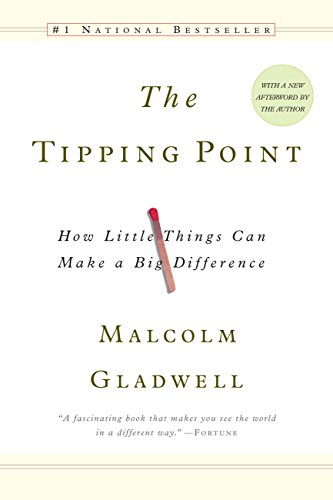

This article is an excerpt from the Shortform summary of "The Tipping Point" by Malcolm Gladwell. Shortform has the world's best summaries of books you should be reading.
Like this article? Sign up for a free trial here .
How do you create a trend, or a social movement, or a product that people can’t get enough of? How do you spread ideas? What you are trying to ignite is a social epidemic, when an idea, message, or product spreads through the public masses like wildfire and creates a craze.
Take a cue from medical epidemics: When a virus spreads, it starts with one person — Patient Zero — who gets sick and infects a handful of others. Then each infected person passes the germs to more people, and with exponential speed and reach the virus spreads until it reaches epidemic proportions. Ideas, messages, behaviors, and products can spread through a population in a social epidemic in the same way that viruses spread. This is how to spread ideas.
To Spread Ideas, Think of Them As Viruses
If you thinking of spreading ideas like an epidemic, you can learn to get your ideas out there and adopted.
Epidemics have a few common characteristics.
- Epidemics are contagious. Whether a virus or an idea, it passes quickly and easily from person to person.
- Small changes have big impacts. In the case of a flu going around the office, a change in the strain of the virus could make it last longer, which creates a bigger window of time that people are sick and can spread the germs.
- Epidemics don’t build gradually and steadily; they grow and reach a boiling point or critical mass, at which point they explode and turn into an epidemic. That threshold is called the tipping point.
We’ll focus on how to spread ideas or products and push them to a tipping point in order to create a social epidemic. There are three factors that can be adjusted to tip an idea to a social epidemic: the messenger, the message itself, or the context of the message. You can turn your ordinary idea into an epidemic by altering one or more of these aspects.
- The Law of the Few: Certain types of people are especially effective at spreading an infectious idea, product, or behavior.
- The Stickiness Factor: You can change the presentation of a message to make it more contagious and stickier (having a more lasting impact).
- The Power of Context: The environment in which the message or idea is delivered can have a huge impact on whether enough people adopt and spread it to create an epidemic.
Spread Ideas, Principle #1: The Law of the Few
When you’re trying to spread an idea or product to epidemic proportions, you need people to help preach your message and spread the word to the masses. The Law of the Few proposes that there are certain, special types of people who are much more effective at broadcasting your idea and getting people to listen and follow suit. These special people are exceptional either in their social connections, knowledge, or persuasiveness and fall into three personality types: Connectors, Mavens, and Salesmen.
Connectors: Social Butterflies
Connectors are people who seem to know everyone. You can find Connectors in every walk of life; they are sociable, gregarious, and are naturally skilled at making — and keeping in contact with — friends and acquaintances.
Connectors tend to be connected to many communities — whether through interests and hobbies, jobs that cause them to work with people in other fields, or other experiences. Their strength is in occupying many different worlds, and bringing them together. Connectors are important to help you spread ideas.
Mavens: Data Banks
While Connectors are people specialists who know many people and can spread information widely, Mavens are information specialists; they are endlessly curious and adept at gathering and retaining information on a wide variety of (sometimes obscure) topics.
A Maven’s influence is in the power of her recommendation. People know that Mavens are knowledgeable and trustworthy sources of information, so a Maven’s word carries a lot of weight. If a Maven suggests you check out a budding epidemic, you’re inclined to listen. They can help you spread ideas.
Salesmen: Persuaders
Salesmen are the people who pitch the idea or message behind an epidemic and persuade people to jump on board. They do not merely store and share information; Salesmen want to convince you to follow their advice.
Salesmen have the right words plus an inherent energy, enthusiasm, charm, and likability that makes people want to listen to them. Plus, Salesmen instinctively know how to use nonverbal cues to reinforce their power of persuasion. Salesmen are masters at spreading ideas.
Spread Ideas, Principle #2: The Stickiness Factor
The Law of the Few declares that the right messengers can tip and spread an epidemic. However, your messengers can only succeed when the message is one that will catch on — in other words, it must be “sticky,” meaning that it must be memorable enough to inspire action or change. If you don’t remember the message, what are the chances you will change your behavior or buy the product?
If an idea or product isn’t catching on, don’t assume that it’s inherently unsticky. Generally, it’s just the presentation of the message that must be tweaked to make it sticky. You can spread ideas that don’t seem sticky.
This doesn’t mean you have to make the message loud or in-your-face to make it sticky; in fact, small, subtle changes are often the key to stickiness. In one example, a researcher distributed pamphlets trying to influence Yale students to get free tetanus shots at the campus health center. Details and photos emphasizing the danger of the disease had virtually no impact, but adding a campus map, circling the health center, and adding the hours the shots were available produced results. Adding information that was more practical and personal made the message sticky.
You have to know your audience to determine how to make information sticky for them; it may require tapping into their interests or subconscious motivation. The forces that inspire people to act are not always intuitive, so sometimes market or scientific research can be useful in developing sticky strategies.
Spread Ideas, Principle #3: The Power of Context
The third principle of spreading ideas has to do with the conditions that lend themselves to an epidemic catching on. The Power of Context capitalizes on the fact that human behavior is greatly affected by the context of our environments, and that altering the physical environment or social context in which people receive your message can make them more receptive to it. Even subtle, seemingly insignificant changes in our environments can make us more likely to change our behavior. When done on a broad enough scale, this can ignite an epidemic.
Social Context: We Act Differently In Different Circumstances and Social Settings
On a small scale, you probably behave differently whether you’re with your family, your coworkers, or your old college friends. You’re also likely to act differently in public than you do in the privacy of your home. Is this effect powerful enough to determine whether you follow a fashion trend or join a social movement? Knowing this is key to knowing how to spread ideas.
Small groups, in particular, have a strong power to amplify a message or idea and help create an epidemic for a few reasons.
- The power of group influence is stronger when each member of the group knows her fellow group members (e.g. you care more about what your friends and family think of you than strangers’ opinions).
- Humans have a mental and emotional limit to the number of social relationships they can maintain, so the size of these groups must be within that limit in order to have that relational level of social influence.
- People rely on each other for division of labor and division of knowledge in order to work more efficiently in groups. This creates a network of interconnectedness and influence.
Following these three principles will help you spread ideas and create an epidemic.
———End of Preview———

Like what you just read? Read the rest of the world's best summary of "The Tipping Point" at Shortform . Learn the book's critical concepts in 20 minutes or less .
Here's what you'll find in our full Tipping Point summary :
- What makes some movements tip into social epidemics
- The 3 key types of people you need on your side
- How to cause tipping points in business and life






